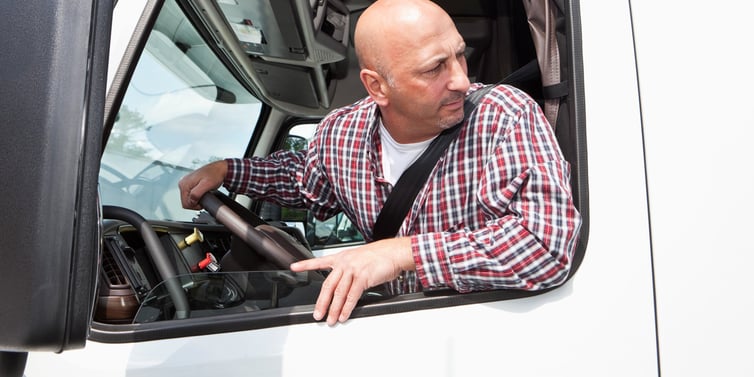
Fall is quickly approaching, and with it comes seasonal hazards that can lead to animal strikes, loss of control crashes, and other losses. Dispatchers, driver managers, and safety personnel should be communicating these hazards to drivers on a regular basis during the fall months.
Set Up the Maneuver

1. Drive parallel to the open dock, and find a point of reference to
2. Pull forward slowly a few feet, and then make a hard right turn to point the tractor in the 12 o’clock position. (Figure 2)which you will align the left rear of the trailer. Some drivers drop an old glove on this spot as a point of reference to see better. (Figure 1)
3. When the tractor is in the 12 o’clock position, make a hard left turn until the tractor is pointed in the nine o’clock position. At this point, the trailer should be at a 45-degree angle with the left rear of the trailer lined up with your point of reference/red glove. (Figure 2)
Get Out and Look (Goal)
4. Turn on the four-way flashers. Walk around the tractor and trailer to ensure there are no objects around or behind the truck, like a vehicle, pallets, or people. If a reliable spotter is available, this is a good time to coordinate hand signals. (Figure 2)
Back In
5. Get back in the truck and roll down the windows. Turn off the radio and other noise distractions so you can hear your spotter. Honk the horn to alert others nearby that you will be moving. Use your mirrors, and begin backing slowly. Turn the steering wheel hard to the left and keep the left rear corner of the trailer lined up with your point of reference. Make steering corrections as needed. (Figure 3)
6. With the left rear corner of the trailer directly over your point of reference, the trailer should be straight or nearly straight enough to back directly into the parking spot. At this point, stop the truck, and do another walk around. Make sure the left rear corner of the trailer is directly over the point of reference. This action will help ensure you do not hit another trailer or object on either side of the trailer. If you need to reposition the truck, do so before backing in. (Figure 3)
7. Get back in the truck, honk the horn again, and start backing in slowly. Follow the parking space’s white line (if available) as you back in. Use the trailer’s tires as a reference on the lines, as well. Countersteer as needed. Before reaching the dock, stop the vehicle. Get out and look one more time behind the trailer. If all is clear, get back in the truck, and slowly finish backing in until you bump the dock. (Figure 3)
Note: These lists are not intended to be all-inclusive.
This material is intended to be a broad overview of the subject matter and is provided for informational purposes only. Great West Casualty Company does not provide legal advice to its insureds or other parties, nor does it advise insureds or other parties on employment-related issues, therefore the subject matter is not intended to serve as legal or employment advice for any issue(s) that may arise in the operations of its insureds or other parties. Legal advice should always be sought from legal counsel. Great West Casualty Company shall have neither liability nor responsibility to any person or entity with respect to any loss, action, or inaction alleged to be caused directly or indirectly as a result of the information contained herein.Reprinted with permission from Great West Casualty Company.

